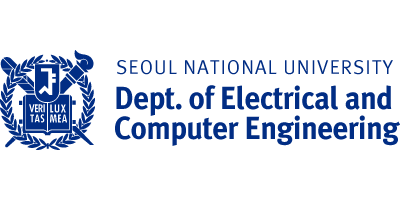Professor Hyuk-Jae Lee, Conditions for the Success of Semiconductor Clusters. (Seoul Economic Daily, 2023.03.17)

Hyuk-Jae Lee, Professor at the Department of Electrical and Computer Engineering, SNU
Governments around the world are making every effort to dominate the semiconductor supply chain. The United States is pursuing measures such as offering incentives such as subsidies and tax deductions for attracting semiconductor manufacturers and restricting investment in competing countries through the CHIPS Act. The European Union (EU), Japan, Taiwan, and others are also actively pursuing the attraction of semiconductor companies, and the Chinese government continues to invest in domestic semiconductor companies in accordance with the "semiconductor self-sufficiency" policy.
In various countries around the world, an important policy regarding semiconductor support projects is the creation of a semiconductor cluster. A semiconductor cluster refers to an industrial ecosystem in which companies necessary for semiconductor development gather in close proximity, thereby increasing synergies such as technological innovation and cost reduction through cooperation and competition. Silicon Valley in the United States is a major semiconductor cluster, with many companies including Intel, AMD, and Nvidia leading the global semiconductor industry. The main reason the United States has secured formidable competitiveness in the system semiconductor sector is the effect of Silicon Valley.
The US government is sparing no effort in securing competitiveness in the semiconductor manufacturing industry as well. To this end, the CHIPS Act explicitly targets the creation of semiconductor manufacturing clusters. Japan is also taking steps to revive its semiconductor industry by creating a semiconductor cluster in the Kumamoto region. Japan is offering to cover half of the cost of constructing TSMC's fabrication facilities, and aims to build an ecosystem that includes traditional Japanese industries such as the materials, components, and equipment industries.
The establishment of semiconductor manufacturing clusters in the United States or Japan could pose a significant threat to the Korean semiconductor industry. If those clusters generate synergistic effects, they could become formidable competitors to Korea's memory semiconductors and foundry industries.
The government's announcement on the 15th regarding the designation of national advanced semiconductor industrial complexes and plans to create semiconductor clusters is a timely policy. It is expected to maximize short-term effects by creating the complexes in the capital region, utilizing the existing semiconductor manufacturing ecosystem. In Korea, a semiconductor industry ecosystem has already been largely established, with memory and foundry semiconductor production factories located in the Gyeonggi Province, surrounded by semiconductor production equipment companies. Global semiconductor equipment companies also have subsidiaries or research centers in the Gyeonggi Province. In addition, many semiconductor design companies and design tool companies have also settled in Pangyo.
The strong semiconductor ecosystem in southern Gyeonggi province is evident from the numbers. 71% of domestic semiconductor companies and 64% of workers are concentrated in Gyeonggi, with over 17,000 semiconductor research and development organizations. The concentration of companies and talent leads to global competitiveness. Gyeonggi province, where 75% of Korea's overall semiconductors and 28% of the world's memory semiconductors are produced, is already a world-renowned semiconductor production site. Establishing a national advanced semiconductor industry park near the region where the semiconductor industry is concentrated can be a foundation for boosting the synergy effect of the semiconductor cluster at the national level.
Advanced industries like semiconductors can lose their competitiveness if they let their guard down, and there are countless examples of this. In the 1980s, there were many semiconductor companies in Japan, but now only a few, such as Toshiba and Renesas, remain. Even US companies like Motorola, which developed the central processing unit (CPU) used in Apple computers, and HP, a semiconductor powerhouse until the 1990s, lost their competitiveness in the 2000s and either gave up their semiconductor businesses or were acquired by other companies.
Korean semiconductor companies are engaged in a war-like survival competition. There is news that the technology gap in the memory semiconductor sector, which used to be considered the best in the world, with American companies in memory semiconductors is narrowing. Meanwhile, in the foundry business, where Korea has to catch up with Taiwan's TSMC, the market share gap is widening, making it difficult to see what lies ahead. To win in a war, you need the best-performing weapons. Creating specialized industrial complexes has the effect of providing excellent weapons for use in battles. It is hoped that the designation of a national advanced industry cluster in the metropolitan area will provide a steppingstone for the Korean semiconductor industry to take another leap forward by maximizing the synergies with the existing semiconductor ecosystem.
Source: https://ee.snu.ac.kr/community/news?bm=v&bbsidx=53554
Translated by: Do-Hyung Kim, English Editor of the Department of Electrical and Computer Engineering, kimdohyung@snu.ac.kr


